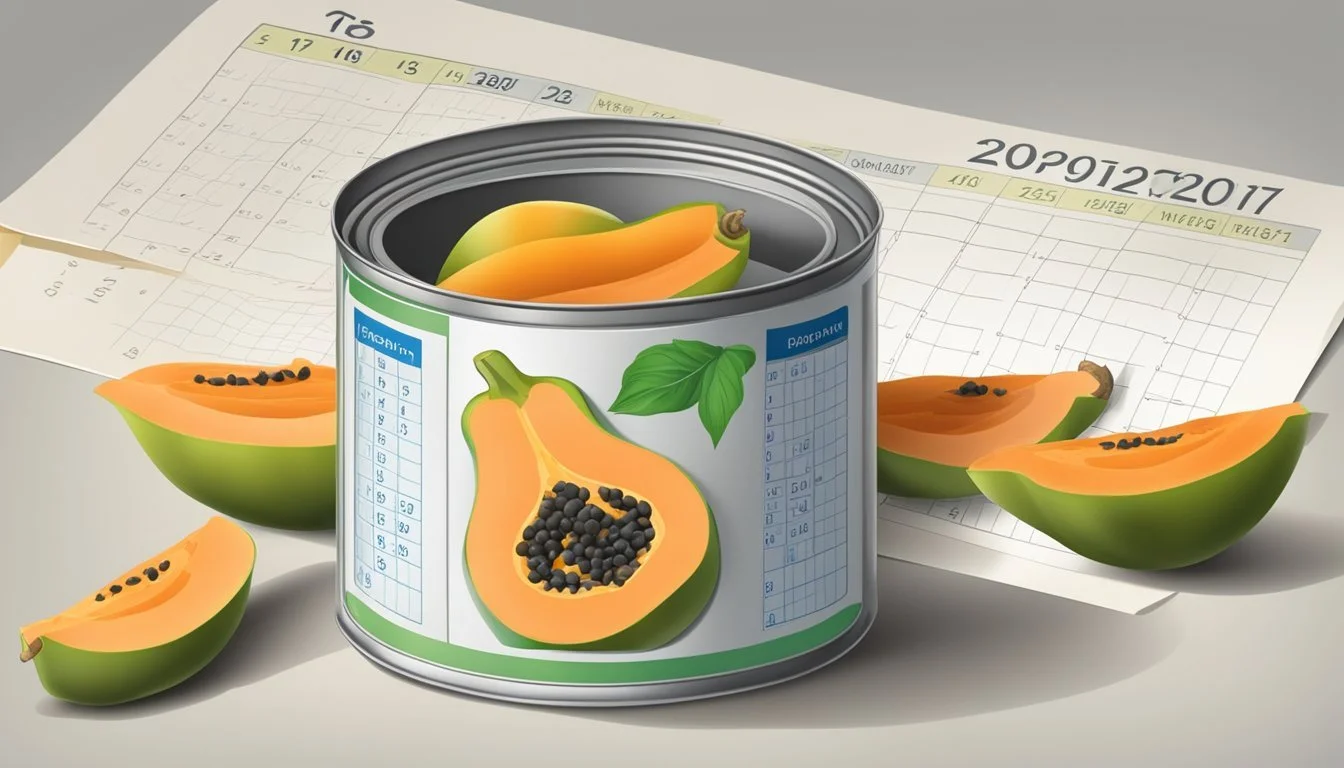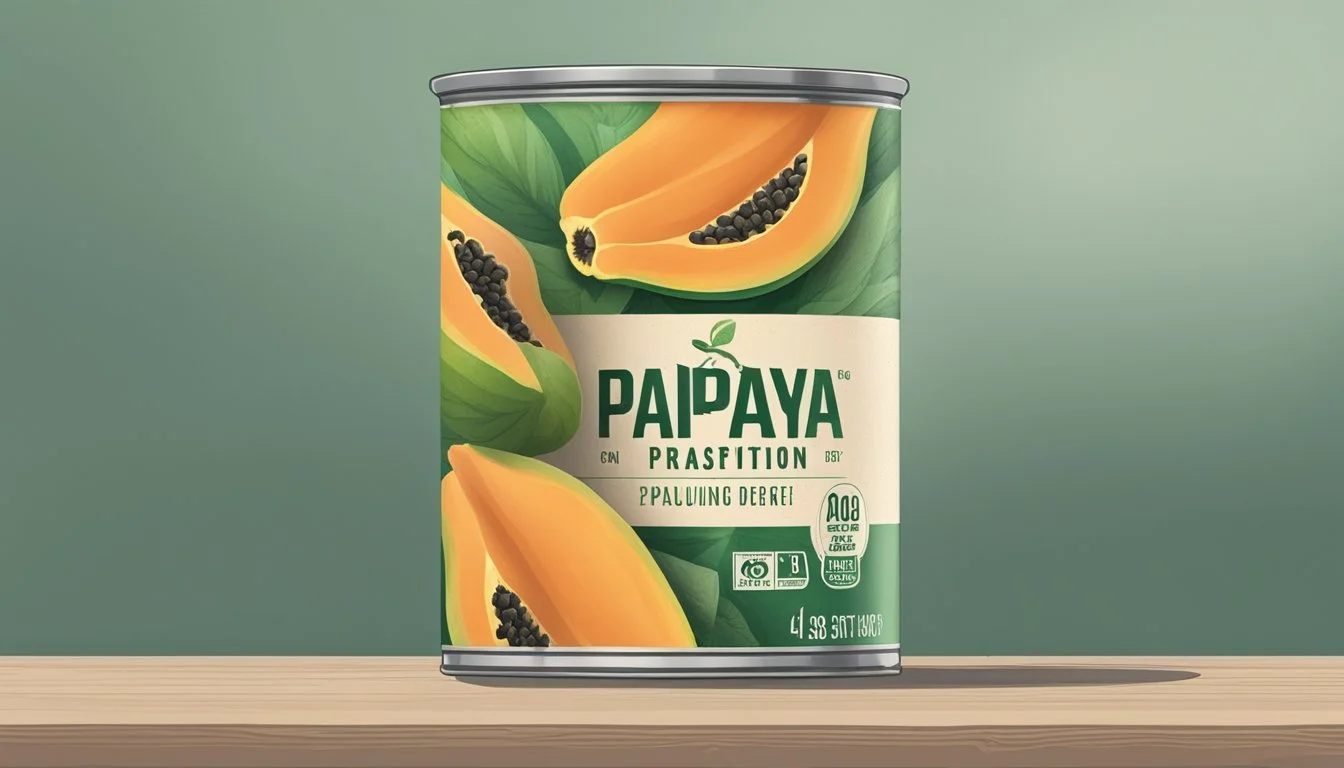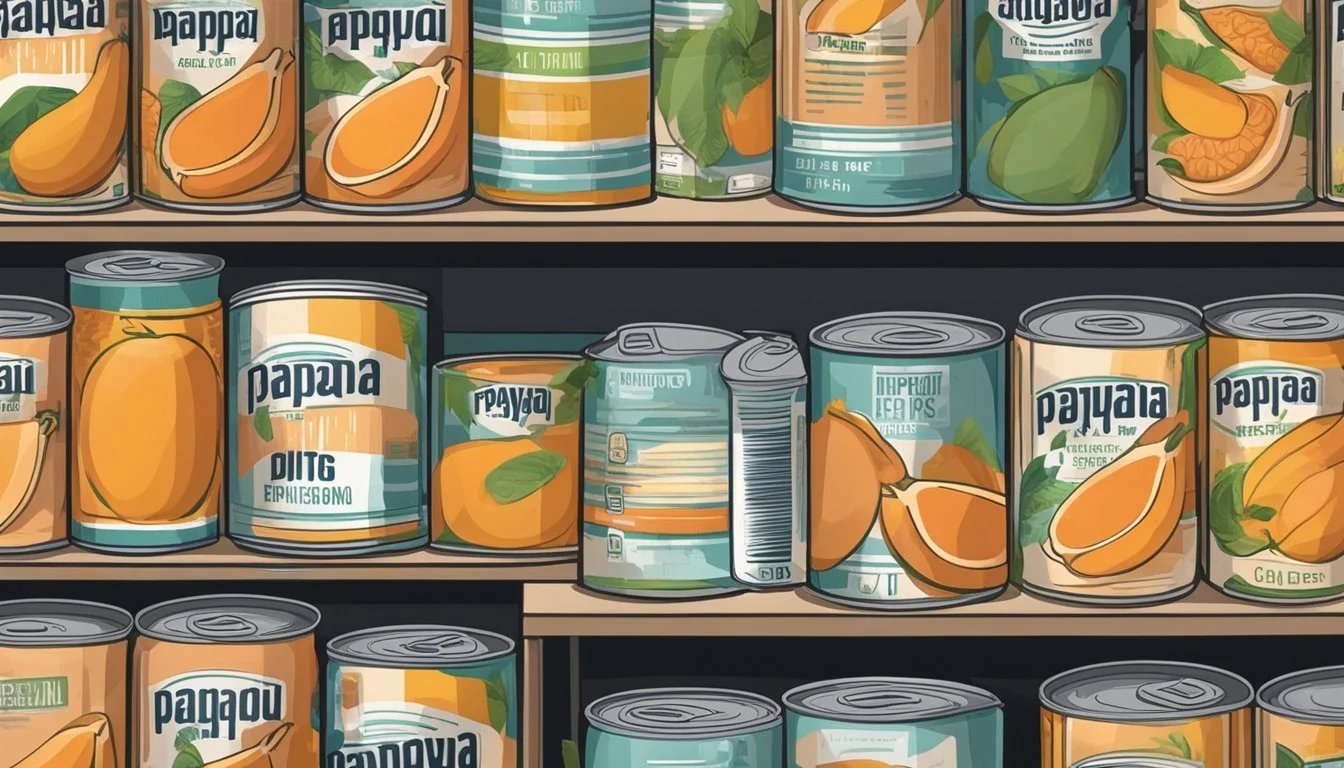Does Canned Papaya Expire?
Understanding Shelf Life and Storage
Canned papaya, like many canned foods, offers a level of convenience that fresh fruits cannot match. These products are designed to last longer than their fresh counterparts, providing a reliable option for various culinary needs. Canned papaya does have an expiration date, but it remains safe to eat for a time beyond that date if stored properly.
The shelf life of canned papaya depends on its storage conditions. Unopened cans of papaya can maintain their best quality for up to 1-2 years if kept in a cool, dry place. Even after the expiration date, if the can remains intact and shows no signs of damage, the contents are usually safe to consume, although the taste and texture might begin to degrade.
It’s important to look for signs that the canned papaya might not be safe to eat. If the can is bulging, rusting, or leaking, it's best to discard it. Additionally, if the papaya inside the can shows an off smell, unusual color, or has developed mold, it should not be consumed. By understanding these factors, readers can make informed decisions about the safety and quality of their canned papaya.
Understanding Canned Papaya
Canned papaya is a convenient way to enjoy this tropical fruit year-round. It undergoes a preservation process that extends its shelf life, while maintaining much of its nutritional value.
What Is Canned Papaya?
Canned papaya refers to papaya fruit that has been preserved in a can using a canning process. The fruit is typically peeled, seeded, and cut into pieces before being canned. This method is widely used to make the fruit available outside its seasonal period.
The canning process includes adding a syrup or juice to the fruit pieces to maintain their shape and flavor. Canned papaya is often found in supermarkets and can be used in various recipes, including desserts and smoothies.
Nutritional Profile of Canned Papaya
Papaya is known for its rich nutrient content, and the canning process retains many of these benefits. Canned papaya contains vitamins such as Vitamin C and Vitamin A, both of which are antioxidants that help protect the body against damage from free radicals.
Additionally, canned papaya provides essential nutrients like fiber, which aids digestion, and folate, important for cell division. Be mindful of the added sugars in some canned varieties which might affect the overall caloric intake.
Nutrient Amount per 100g Vitamin C ~45mg Vitamin A ~950 IU Fiber ~1.5g Folate ~37μg
The Canning Process and Its Impact on Papaya
The canning process involves placing the prepared papaya into cans, adding a preservative solution, and then sealing the cans airtight. These cans are heated to a specific temperature to kill any harmful bacteria and microorganisms.
This method extends the shelf life of papaya to around 1 to 2 years when stored in a cool, dark place. While the process preserves most of the nutrients, some heat-sensitive vitamins like Vitamin C might be partially reduced. Preservatives used in the solution can also help maintain the fruit's texture and color, making it an attractive addition to various culinary dishes.
Expiration and Shelf Life
Canned papaya paste's duration of quality depends on factors like storage conditions and packaging integrity. Understanding the labels can help ensure optimal freshness and safety.
Differences Between Best-By, Use-By, and Expiration Dates
Best-By Date: Indicates the period during which the product will be at its peak quality. Foods are still safe to eat after this date but might not taste as good.
Use-By Date: Communicates the last date recommended for consumption. This is important for maintaining both quality and safety.
Expiration Date: Signifies the final date the product is safe to consume. Consuming food past this date can pose health risks.
Safety and Spoilage Indicators
Ensuring the safety of canned papaya is crucial to avoid health risks. Recognizing signs of spoilage and being aware of potential health hazards are key steps in maintaining food safety.
Recognizing Signs of Spoiled Canned Papaya
Spoilage indicators in canned papaya include changes in appearance, smell, and texture. Common signs of spoilage are:
Bulging cans: This can indicate gas production from bacterial activity inside the can.
Rusty or damaged cans: Physical damage can compromise the can's seal, leading to contamination.
Unpleasant odor: A sour or off smell is a strong indicator of spoilage.
Color changes: Darkened or discolored papaya may signal bacterial or fungal growth.
Mold growth is another sign, which may appear as spots or fuzzy patches. Always inspect the can before consumption and discard if any of these indicators are present.
Health Risks Associated with Spoiled Canned Foods
Spoiled canned papaya can pose several health risks due to harmful bacteria. Botulism is a significant concern, as the bacteria Clostridium botulinum can produce deadly toxins in improperly canned foods. Symptoms of botulism include:
Nausea
Vomiting
Difficulty swallowing
Muscle weakness
Other risks include foodborne illnesses caused by bacteria such as Salmonella or E. coli, leading to symptoms like diarrhea and stomach cramps.
To ensure safety, follow proper storage practices and observe the expiration date. If in doubt, it’s safer to discard the product rather than risk contamination.
Proper Storage Practices
Ensuring the longevity and quality of canned papaya involves adhering to specific storage guidelines. This encompasses both unopened and opened cans to maximize freshness and prevent spoilage.
Storing Unopened Canned Papaya
Unopened cans of papaya should be stored in a cool, dry place removed from direct sunlight. Ideal temperatures range between 50°F to 70°F (10°C to 21°C). Excessive heat can cause canned goods to spoil faster by accelerating chemical reactions within the can.
Humidity control is crucial. High humidity can lead to rust on the cans, potentially compromising the integrity of the seal. To prevent this, keep the cans in a well-ventilated area. Shelves or pantries away from kitchen appliances often make suitable storage locations. Checking the cans regularly for dents, rust, or bulges is advisable, as these can indicate potential spoilage.
Best Practices for Storing Opened Canned Papaya
Once opened, canned papaya must be transferred to an airtight container to avoid exposure to air and moisture. This container should then be kept in the refrigerator. Proper storage at a consistent temperature below 40°F (4°C) is vital to maintaining freshness.
Refrigerated storage typically keeps opened canned papaya good for up to a week. Always use clean utensils when handling the papaya to prevent contamination. It is also helpful to label the container with the date it was opened, ensuring that it is consumed within a safe timeframe. Avoiding cross-contamination with other foods is essential to maintain the quality and safety of the papaya.
Impact of External Factors on Canned Papaya
Various external factors can influence the shelf life and quality of canned papaya. Key considerations include temperature, sunlight, and the physical condition of the can.
How Temperature and Sunlight Affect Canned Papaya
Temperature significantly impacts the longevity of canned papaya. Exposure to excessive heat can compromise the can's seal, allowing contaminants to enter and spoil the contents.
Direct sunlight also poses a risk. UV rays can degrade the can's integrity, which may accelerate the biochemical changes in the papaya, reducing its quality and safety.
Optimal storage conditions involve keeping canned papaya in a cool, dry, and dark place. Consistent temperatures below 75°F (24°C) are ideal.
Any fluctuation out of this range could shorten the product's shelf life considerably.
Understanding the Impact of Can Damage
Dents or other forms of damage to the can are red flags. Such physical disruptions can compromise the integrity of the can, leading to potential contamination.
If the seal of the can is broken, oxygen and other environmental factors can promote bacterial growth.
A visibly damaged can should be avoided, as it may not effectively protect its contents.
Maintaining can integrity is crucial for maximizing the shelf life of canned papaya. Always inspect cans for any dents, bulges, or rust before purchase and storage.
Using Canned Papaya in Cooking
Canned papaya can enhance a variety of dishes, from stews and soups to baked goods. Its texture and flavor profile provide a smooth and slightly sweet component ideal for both savory and sweet recipes.
Integrating Canned Papaya into Recipes
Canned papaya works well in both sweet and savory recipes due to its sweet and slightly tangy flavor.
Stews and Soups: Add cubes of canned papaya to stews and soups to introduce a subtle sweetness. The fruit softens during cooking, thickening the broth and adding smoothness.
Baked Goods: In baked goods like muffins or bread, canned papaya can be used similarly to bananas or applesauce. Its natural sugars reduce the need for added sugar, and its smooth texture keeps baked items moist.
Smoothies: For a tropical twist, blend canned papaya into smoothies. Its thick texture creates a creamy consistency without needing dairy.
Adjusting Recipes for the Canned Papaya's Flavor and Texture
Considering the unique flavor and texture of canned papaya is crucial for achieving well-balanced dishes.
Flavor: Canned papaya is sweeter than fresh papaya due to added syrups. Reduce other sweeteners in your recipes to balance the taste. It pairs well with citrus in salads and dressings, as the acidity contrasts with its sweetness.
Texture: The smooth and firm texture of canned papaya may alter the consistency of dishes. For thickened sauces or soups, it can provide a natural thickening agent due to its softening properties when cooked.
Acidity and Sugar: Adjust the level of acidity by adding a splash of lime or lemon juice, particularly in savory dishes. This helps balance the inherent sweetness and enhances the overall flavor profile.
Using canned papaya can be a simple yet effective way to diversify flavors and improve textures in various culinary contexts.








